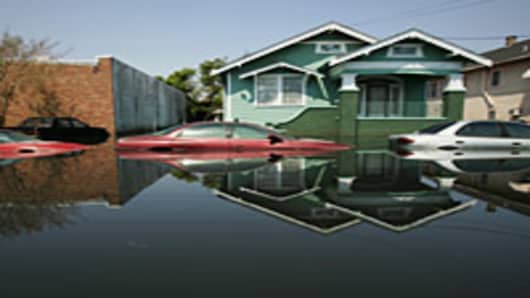A major disaster sets the perfect stage for grandstanding. And in 2005, nothing was more “major” than Hurricane Katrina.
In the weeks and months following Katrina, high-profile business executives and government leadersponey-ed up to publicly weep over the devastation and the human suffering. Then they laid out their dramatic plans to come to the rescue.
The problem is, most of those big talkers broke their promises and never came back to New Orleans.
- Real estate mogul and reality show host Donald Trump announced plans for a luxury hotel and apartment complex in the downtown area.
“I’m pleased that Trump International Hotel and Tower, an award-winning design, will soon be with you,” Trump said. New Orleans is still waiting and the site remains a parking lot.




